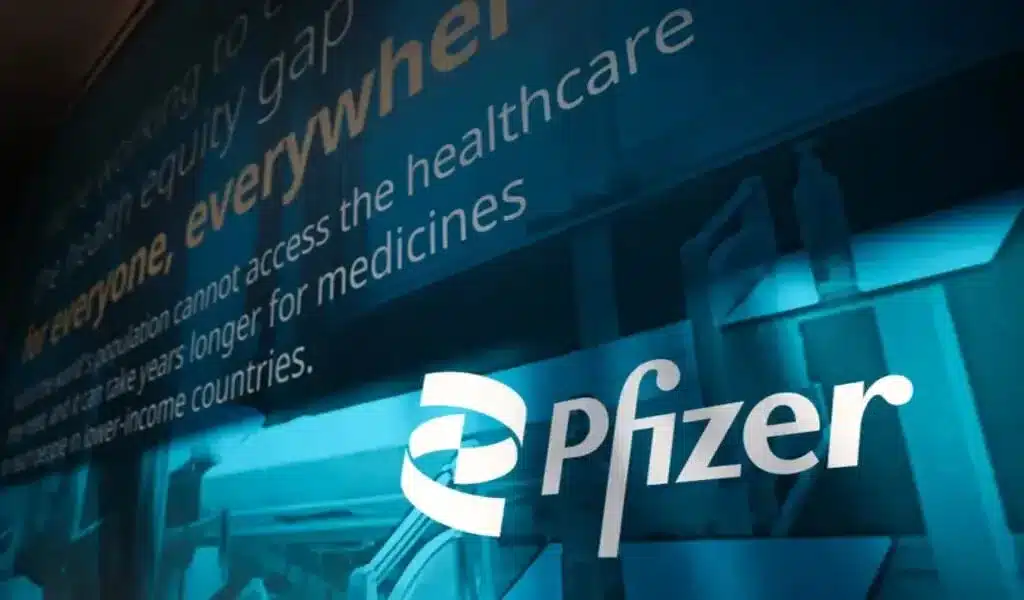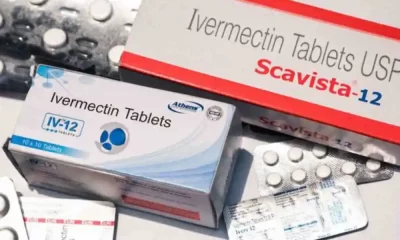Health
Breaking Down Myths And Misconceptions About Smile Eye Surgery
Smile Eye Surgery – Ever squinted at the fine print on a contract or strained to read street signs while driving at night? You’re not alone. Millions around the world experience issues with their vision every day.
Smile Eye Surgery, a less invasive alternative to LASIK, has become increasingly popular among those seeking vision correction.
But amidst its rising popularity, several myths and misconceptions have surfaced. If you’ve been considering this procedure but are held back by fears of pain, lengthy recovery times or potential complications–this article is for you.
We’re going to debunk some of these common myths and provide clear answers about the Smile Eye Surgery process. Let’s get your facts straight so you can make an informed decision about your eye health.
Pain and Procedure
You might’ve heard that SMILE eye surgery is an excruciating ordeal, but let’s bust this myth wide open – it’s actually a quick and virtually painless process! The fearsome reputation of the procedure largely stems from pre-surgery jitters and misconceptions about its nature.
SMILE eye surgery involves surgical precision, utilizing advanced technology to accurately shape the cornea. This reduces the potential risks associated with manual procedures, significantly enhancing procedure safety. The whole operation typically takes only a few minutes per eye!
Anesthesia use during SMILE eye surgery ensures your comfort throughout the procedure. Topical anesthesia in the form of drops is used to numb your eyes completely. While you may feel slight pressure or a mild sensation, actual pain during the operation is virtually non-existent.
Post-operative discomfort can vary among patients, yet most report only minor irritation, if any at all. This transient discomfort isn’t due to the surgery itself but rather from post-surgical healing processes. Over-the-counter lubricating eye drops can efficiently manage this minor discomfort.
Thus, while apprehension before undergoing any surgical procedure is perfectly natural, rest assured that SMILE eye surgery isn’t synonymous with agonizing pain or extended recovery time. With accurate information and realistic expectations in hand, you can confidently step into your journey towards better vision!
Recovery Duration
Surprisingly, it’s a fact that nearly 90% of patients report clearer vision within days, not weeks or months, following the procedure. The typical recovery duration for SMILE eye surgery is much shorter than you might expect. However, the healing process varies from person to person.
Post-operative care plays a crucial role in this recovery timeline. Here are some critical points about your post-surgery journey:
- Regular follow-up visits are essential to track your visual improvement.
- It’s recommended to avoid certain activities like swimming or strenuous exercise until your doctor gives clearance.
- Using prescribed eye drops and resting your eyes can significantly speed up healing.
- Lifestyle adaptations such as wearing sunglasses outdoors and taking breaks while using digital devices can help improve comfort during recovery.
During the first week after surgery, minor discomforts like dryness or light sensitivity may occur but these usually resolve themselves quickly with appropriate care. Over time, most patients experience substantial visual improvement.
It’s important to remember that complete stabilization of vision may take several weeks, but the majority of patients report significant progress within a few days post-surgery. Maintaining communication with your healthcare provider during this period will ensure any potential issues are addressed promptly and effectively for optimal results.
Risks and Complications
Despite its high success rate, it’s important to acknowledge that as with any surgical procedure, SMILE can carry potential risks and complications. However, these are typically manageable and rare.
Infection rates after SMILE surgery are uncommon due to the minimally invasive nature of the procedure. Still, like all surgeries, there is a small risk. Risk management strategies such as appropriate preoperative preparation and postoperative care significantly reduce this likelihood.
Surgical errors are also infrequent as SMILE is a highly sophisticated procedure performed using state-of-the-art technology. Nonetheless, individual susceptibility plays a crucial role in determining how one might respond to the operation; hence it’s essential to discuss your medical history with your surgeon.
Post operative vision changes can occur but usually stabilize within weeks of surgery. In some cases, patients may experience minor vision irregularities such as glare or halos around lights at night time. These symptoms often diminish over time as your eyes adjust to their new shape.
It’s crucial to weigh these potential risks against the benefits before making a decision about undergoing the procedure. Your surgeon will be able to provide detailed information tailored specifically for you based on your eye health history and lifestyle needs.
Comparing LASIK
Let’s take a moment to compare it with LASIK, another popular vision correction procedure – just wait until you hear how they stack up!
- Lasik alternatives: SMILE eye surgery is a newer technique that has been gaining popularity as an alternative to LASIK. The main difference lies in the process of creating the corneal flap; while LASIK uses two lasers, SMILE only uses one.
- Cost comparison: Both procedures come at a similar cost range, which can be influenced by various factors such as your location and the surgeon’s experience. However, remember that both are investments in your long-term vision health.
- Technological advancements: Despite being newer, SMILE leverages advanced technology for a less invasive procedure resulting in faster recovery times than traditional LASIK.
The success rates for both procedures are comparably high but may vary based on individual patient factors like prescription strength and corneal thickness. Patient experiences also tend to be positive for both surgeries, reporting improved visual acuity and quality of life post-surgery.
So while comparing these two methods might seem like splitting hairs at first glance, understanding their differences can help you make an informed decision about your eyesight treatment plan.
Longevity of Results
When it comes to the longevity of results, you’ll find that both LASIK and SMILE procedures offer lasting vision correction. The result stability is often impressive for both surgeries, with many patients experiencing a significant improvement in their eyesight that lasts for years.
However, like any surgical procedure, individual outcomes can vary. Though rare, some patients may require additional treatment or enhancements over time to maintain optimal visual acuity. That’s why your post-surgery lifestyle plays such an essential role in sustaining the benefits of these procedures.
To ensure your vision remains sharp and clear after surgery, follow maintenance tips provided by your ophthalmologist diligently. These include adhering to post-operative medication schedules, avoiding strenuous activities initially after surgery and wearing sunglasses to protect against UV rays.
The satisfaction rate among patients who’ve undergone LASIK or SMILE eye surgery is high due to the long-term vision improvement they enjoy. This level of contentment stems from less reliance on corrective eyewear and the freedom it brings to their lives.
In light of this information, keep in mind that while these surgeries have been proven effective for many people worldwide, personal experiences can differ based on numerous factors including age, general health conditions and adherence to post-operative care instructions.
Age Restrictions
After understanding the longevity of SMILE eye surgery results, let’s shift our focus to another prevalent misconception – age restrictions. Many people wrongly believe that there are rigid age limits for undergoing this procedure.
Eligibility Criteria for SMILE eye surgery is not strictly age-dependent. However, specific considerations come into play at different life stages:
- Adolescent Considerations: For younger people, especially adolescents, it’s advised to wait until their eyes have stopped growing and their prescription has stabilized before considering any corrective eye surgery.
- Optimal Age: Generally, the most suitable age range for this procedure is between 20 and 40 when your vision prescription tends to be stable.
- Senior Concerns: While there’s no upper age limit as such for SMILE eye surgery, seniors may face increased risk of complications and slower recovery times.
- Age Related Complications: As we age, we become more prone to conditions like cataracts which might complicate the surgical process or its outcomes.
- Special Cases: In certain exceptional cases involving very high prescriptions or thin corneas, surgeons may recommend waiting beyond typical optimal ages.
Remember that each individual case varies. It’s important to consult with a professional who can assess your unique circumstances and guide you towards making an informed decision regarding SMILE eye surgery.
Conclusion
Don’t let misconceptions hold you back from embracing the clarity that SMILE eye surgery can offer. It’s not overly painful, recovery is swift, and complications are minimal. Compared to LASIK, it’s a worthy contender. The results? They’re long-lasting. And age? Just a number here. So why hesitate? Squash those myths and see the world in a new light!
SEE ALSO: Opill’s FDA Approval: First Over-the-Counter Birth Control Pill In The US
Health
Report Causes Pfizer Stock to Climb Approximately $1 Billion Acquired by Starboard

(VOR News) – According to a rumor that activist investor Pfizer Starboard Value has taken a holding in the struggling pharmaceutical business that is expected to be worth around one billion dollars, the stock of Pfizer (PFE) is on the increase in premarket trading on Monday.
This comes after the report was made public. The report was made available to the general public following this. Starboard Value was successful in moving forward with the acquisition of the position.
Starboard is said to have approached Ian Read, a former chief executive officer of Pfizer, and Frank D’Amelio, a former chief financial officer, in order to seek assistance with its goals of boosting the performance of the company, according to the Wall Street Journal. Read and D’Amelio are both former Pfizer executives.
The purpose of this is to facilitate the accomplishment of its objectives, which include enhancing the overall performance of the firm.
In their previous jobs, D’Amelio and Read were chief financial officers.
It is stated in the report that the hedge fund is of the opinion that Pfizer, which is currently being managed by Albert Bourla, who succeeded Read as Chief Executive Officer (CEO) in 2019, does not demonstrate the same level of mergers and acquisitions (M&A) discipline that Read did. Bourla took over for Read in 2019. Read was succeeded by Bourla in the year 2019.
Pfizer, a multinational pharmaceutical conglomerate, has made substantial investments in the acquisition of more companies that are involved in the research and development of cancer medicines.
These businesses have been acquired for billions of dollars. The biotechnology company Seagen, which was acquired by Pfizer in the previous year for a price of $43 billion, is included in this category. One of the businesses that can be classified as belonging to this category is Seagen.
In spite of the fact that the S&P 500 Index experienced a 21% increase in 2024.
No major trading occurred in Pfizer stock that year.
Due to the fact that the demand for Pfizer’s COVID-19 vaccines fell after the firm reached its pandemic peak in 2021, the share price of the corporation has decreased by over fifty percent since that time.
This drop has occurred ever since the company’s shares reached their maximum peak, which was during the time that this decline occurred. Not only have they not changed at all, but they have also remained essentially stable. This is in contrast to the S&P 500, which has gained 21% since the beginning of this year.
Recently, the corporation was forced to take a hit when it decided to recall all of the sickle cell illness medications that it had distributed all over the world.
Fears that the prescription could lead patients to experience severe agony and possibly even death were the impetus for the decision to recall the product. In spite of the fact that Pfizer’s stock is increasing by almost three percent as a result of the news that followed the company’s decision, this is the circumstance that has come about.
SOURCE: IPN
SEE ALSO:
New Study Reveals Drinking Soda Pop Increases the Risk of Stroke
The Mpox Vaccine’s Protection Decreases Within a Year; Booster Requirements
Health
New Study Reveals Drinking Soda Pop Increases the Risk of Stroke

A recent report from global research indicates that excessive consumption of coffee or soda pop is associated with an increased risk of stroke, although the intake of black and green tea is correlated with a reduced risk. Excessive consumption of soda pop or coffee warrants caution!
Recent research indicates that it may substantially elevate the risk of stroke.
Consuming four cups of coffee daily elevates the risk of stroke, according to studies, although ingesting 3-4 cups of black or green tea daily typically offers protection against stroke. Additionally, consume more coffee; it may reduce your risk of mortality.
Recent findings from global research studies co-led by the University of Galway and McMaster University, alongside an international consortium of stroke researchers, indicate that soda, encompassing both sugar-sweetened and artificially sweetened variants such as diet or zero sugar, is associated with a 22 percent heightened risk of stroke. The risk escalated significantly with the consumption of two or more of these beverages daily.
Stroke Risk Fizzy Drinks and Soda Pop
The correlation between fizzy drinks consumption and stroke risk was most pronounced in Europe, the Middle East, Africa, and South America. Women exhibit the most elevated risk of stroke from bleeding (intracranial hemorrhage) associated with fruit juice beverages. Consuming over 7 cups of water daily diminishes the likelihood of stroke due to a clot.
Researchers observed that numerous items advertised as fruit juice are derived from concentrates and have added sugars and preservatives, potentially negating the advantages often associated with fresh fruit and instead elevating stroke risk.
Fruit juice beverages were associated with a 37 percent heightened risk of stroke resulting from bleeding (intracranial hemorrhage). Consuming two of these beverages daily increases the risk thrice.
Consuming over four cups of coffee daily elevates the risk of stroke by 37 percent, although lower consumption levels do not correlate with stroke risk. Conversely, tea consumption was associated with an 18-20 percent reduction in stroke risk. Additionally, consuming 3-4 cups daily of black tea, such as Breakfast and Earl Grey varieties, excluding green and herbal teas, was associated with a 29 percent reduced risk of stroke.
Consuming 3-4 cups of green tea daily was associated with a 27 percent reduction in stroke risk. Notably, the addition of milk may diminish or inhibit the advantageous effects of antioxidants present in tea. The lower risk of stroke associated with tea consumption was negated for individuals who added milk.
Disclaimer: This article is intended solely for informational reasons and should not be considered a replacement for professional medical counsel. Consistently consult your physician regarding any inquiries pertaining to a medical problem.
Related News:
Starbucks Faces Sales Decline Amid Price Fatigue and Rising Competition
Starbucks Faces Sales Decline Amid Price Fatigue and Rising Competition
Health
Following a Diagnosis of Breast Cancer, What Else Should You Know?

(VOR News) – Even though breast cancer affects one in eight American women, receiving a diagnosis can make a woman feel isolated.
Experts in breast cancer from the American College of Physicians (ACS) advise patients on how to manage their disease so that they may better cope with this awful information.
First, the kind and stage of breast cancer dictates the course of your care.
In addition to immunotherapy and chemotherapy, there are various surgical options available for the treatment of breast cancer.
Women of African descent are disproportionately affected by triple-negative breast cancer, an extremely aggressive form of the disease that has never proven easy to treat.
According to the American Cancer Society, pembrolizumab (Keytruda), an immunotherapy, has been shown to be helpful when combined with chemotherapy and is currently the recommended course of treatment for certain combinations of triple-negative breast cancer.
In her presentation, Dr. Katharine Yao said, “It’s really important that the patient and physician discuss the patient’s preferences and values when deciding what type of treatment to pursue and that they have an honest, individualized discussion with their care team.”
She is currently responsible for developing breast cancer treatment recommendations for more than 575 hospitals and institutions nationwide in her role as chair of the American College of Surgeons’ National Accreditation Program for Breast Institutions (NAPBC).
Yao, vice chair of research at Endeavor Health NorthShore Hospitals in New York, pointed out that each decision made about a patient’s treatment plan should take her preferences and diagnosis into consideration.
She ought to think about whether she would prefer a mastectomy—a surgical procedure that involves removing the entire breast with or without reconstruction—or a lumpectomy, which involves a surgical procedure that spares part of the breast tissue.
She stated that “the breast cancer you have may be very different from the breast cancer you hear about in your neighbor, colleague, or friend” in a press release issued by the American Cancer Society (ACS).
“Consider that while discussing breast cancer with others.”
Throughout your journey, it is critical that you look after your emotional health because having breast cancer may have a detrimental impact on your mental health.
“Getting a cancer diagnosis does not mean that everything in your life stops to be normal.” Director of the Fellowship in the Diseases of the Breast program at the Winthrop P. Rockefeller Cancer Institute at the University of Arkansas and state head of the American Cancer Society Commission on Cancer for Arkansas, Dr. Daniela Ochoa She thinks adding the burden of a cancer diagnosis and treatment to all the other pressures in life may be taxing.
“Managing stress and emotional health is vital component of a treatment plan.”
Ochoa recommends clinically trained psychologists and social workers who have assisted people in coping with cancer to anyone receiving treatment. Learning coping techniques might also be facilitated by joining cancer support groups or cancer wellness initiatives.
Breast cancer specialists say your care team is crucial.
The American Cancer Society (ACS) defines comprehensive care as having support at every stage of the procedure from surgeons, oncologists, patient navigators, nurses, social workers, psychologists, and other specialists.
After receiving a breast cancer diagnosis, women should see a surgeon or medical oncologist to explore their options; nevertheless, treatment shouldn’t be discontinued after just one appointment or after surgery is over.
Additionally, you can ask trustworthy friends or family members to accompany you to appointments and aid you with research or notes. They could serve as a network of support for you.
Yao stated in his talk that “one of the most important things is that patients should search out a team they have confidence in, that they trust will have their back when they need it, and a team they feel they can get access to and that will help them when they are in need.”
SOURCE: MP
SEE ALSO:
The Mpox Vaccine’s Protection Decreases Within a Year; Booster Requirements
COVID was a Paradigm Shift in Health Policymaking, Says Commissioner Stella Kyriakides.
Rwanda Reports 8 Deaths Linked To Ebola-Like Marburg Virus Days After It Declared An Outbreak
-

 News3 years ago
News3 years agoLet’s Know About Ultra High Net Worth Individual
-
Entertainment2 years ago
Mabelle Prior: The Voice of Hope, Resilience, and Diversity Inspiring Generations
-

 Health3 years ago
Health3 years agoHow Much Ivermectin Should You Take?
-

 Tech2 years ago
Tech2 years agoTop Forex Brokers of 2023: Reviews and Analysis for Successful Trading
-

 Lifestyles2 years ago
Lifestyles2 years agoAries Soulmate Signs
-

 Movies2 years ago
Movies2 years agoWhat Should I Do If Disney Plus Keeps Logging Me Out of TV?
-

 Health3 years ago
Health3 years agoCan I Buy Ivermectin Without A Prescription in the USA?
-

 Learning2 years ago
Learning2 years agoVirtual Numbers: What Are They For?
